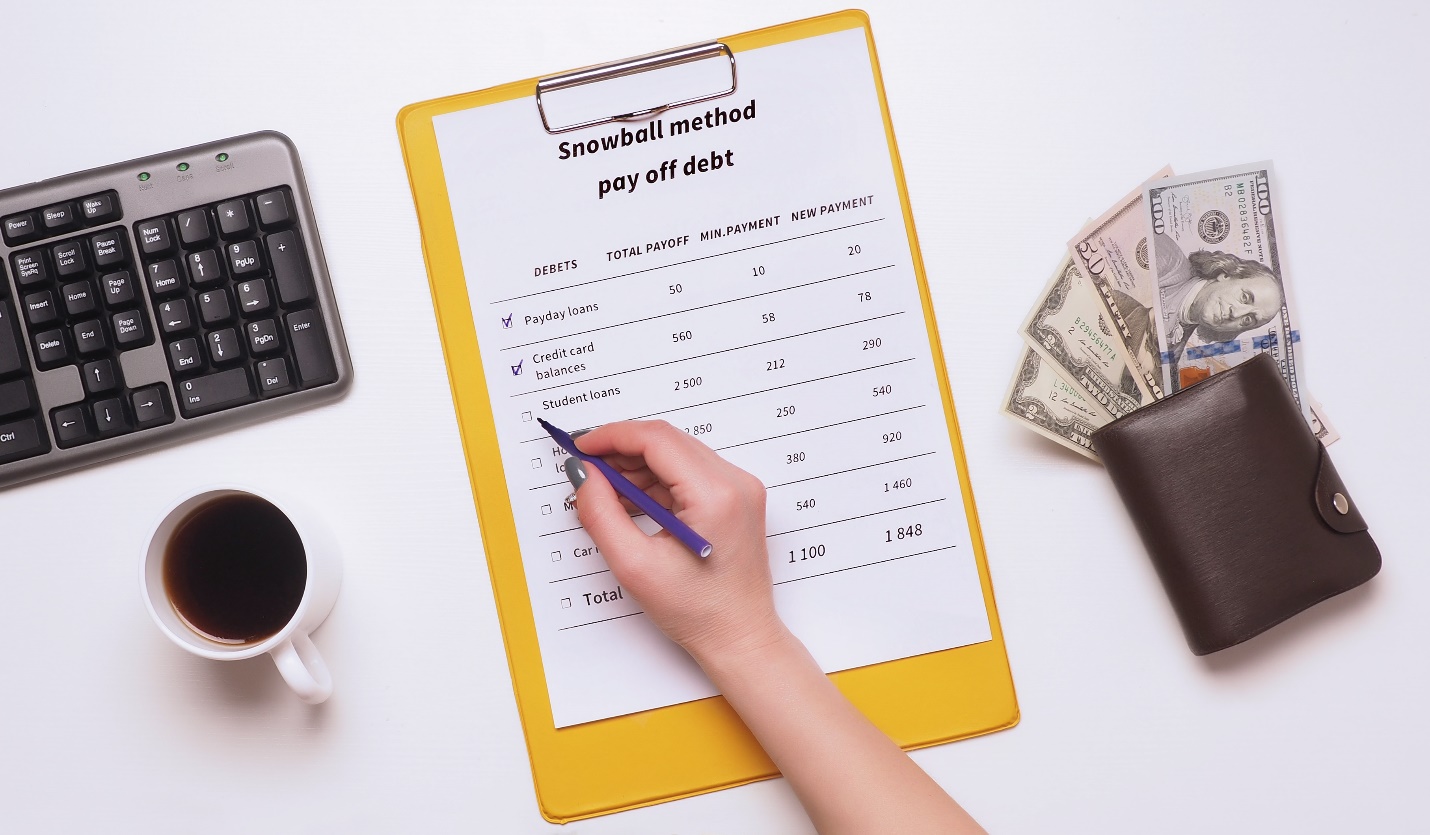
Even if you pay the bare minimum on your monthly debts, paying it off might take a very long time. Accelerating payments is a common strategy for clearing debt quickly. The debt avalanche approach and the debt snowball method are two alternatives for eliminating debt.
Personal, student, and automobile loans, credit card balances, and medical expenditures fall under both the debt avalanche and debt snowball categories of consumer debt. Mortgage payments are incompatible with this method. Therefore you should not try it. Each strategy requires you to itemize your bills and pay the bare minimum on all but one.
After that debt is eliminated, you may go on to the next. You may even employ both strategies together. Pick a small debt with a high-interest rate and focus on paying that off first. If it seems like those two strategies aren't going to cut it, debt relief can be an option to explore.
Debt Avalanche

With the debt avalanche strategy, you pay the bare minimum on all your bills and then prioritize paying off the account with the greatest interest rate. The interest savings from using the debt avalanche strategy are substantial.
Debt Avalanche Example
You can get the most out of your extra $3,000 per month that you may put toward paying off debt by employing the debt avalanche strategy. If you're using the avalanche approach to pay off your debt, you'll start with your credit cards and have 11 months to pay off the remainder of your debt, for a total of $1,011.60 in interest.
Applying the snowball technique would require you to pay off your auto loan first, getting you out of debt in 11 months but costing you an additional $1,514.97 in interest. Changing the sequence of your loans can save you a tonne of money in interest payments. The avalanche strategy can also cut the time it takes to pay off debt for people with larger amounts of debt.
What are the Pros and Cons of the Debt Avalanche Strategy?

If you use the debt avalanche method, you may save a tonne of money in interest charges just by rearranging the sequence in which you pay off your debts. The avalanche strategy may cut months off the time it takes to pay off debt, even for people with larger debt. Even while the debt avalanche approach is the most efficient way to reduce interest and pay off debt quickly and easily, it is not without drawbacks.
Discipline is the key ingredient here; you'll need to avoid the temptation to merely make the minimum payment and instead devote every dollar you save toward eliminating your debt. It won't be as effective if you lose motivation and neglect the debt avalanche for a few months.
Debt Snowball
The debt snowball strategy starts with the lowest debts and rolls the savings into paying them off as quickly as possible. The outstanding balances are shown in descending size order. If you can afford to, you should prioritize the earliest due date and spend as much additional money on that payment as possible. For the others, minimal payments will suffice. As soon as you've paid off one loan, it would help if you started making extra payments on the next smaller one.
Debt Snowball Example
Let's apply the snowball effect to our initial debt illustration. To restate, each month, you may put an extra $3,000 toward paying down your debt. According to the snowball technique, the lowest debt should be tackled first. In this case, the automobile loan. After three months, you'd have it settled and go on to the other two. Like the debt avalanche strategy, you would pay off your debt in around 11 months. You would have spent an additional $500 in interest costs.
The Debt Snowball Method: Pros and Cons
Getting motivated to pay off your debts is challenging, and it becomes much more difficult when you don't see any progress being made; without success, you may be more likely to give up too soon. The incentive it provides is the primary benefit of the debt snowball strategy.
That seemingly impossible debt is starting to look more manageable. The debt snowball has the major downside of potentially increasing financial costs. You can spend more on interest since you're putting your balances ahead of interest rates.
Considerations
Debt may be paid off more quickly using snowball or avalanche methods, which involve paying more than the monthly minimum on your bills. Both presuppose that you have the financial wherewithal to make consistent additional payments against your debt. For any of these methods to be effective on credit card debt, the cards in question must be ones that will not be used for further transactions. To avoid ever resorting to this phrase, avoid running up any balance.



